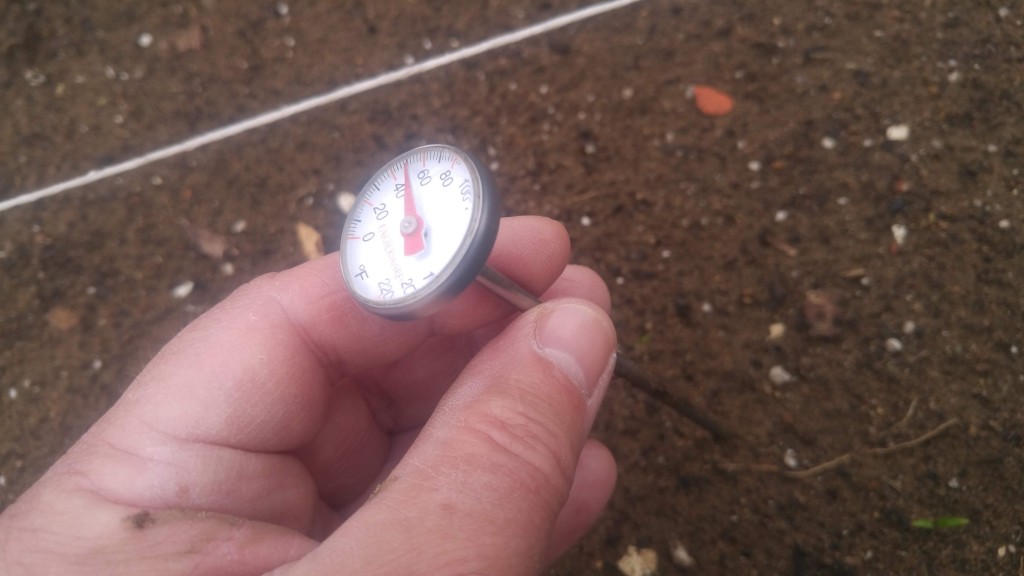Soil temperatures have been cool enough during April that it has slowed down plant growth. My winter rye cover crop looks to be a week behind last year at this date and last year was later than normal as well. So that means we’re really behind. The apple tree buds have finally, slowly opened.
This may be the year to monitor soil temperatures more closely than usual if this cooling trend continues.
Some vegetable crop seeds can be sown into cold soil and do quite well under those conditions while others will not germinate or grow at all. There are certain minimum temperatures that seeds need in order to germinate. Seeds languishing in cold soil will be damaged or more likely, rot in place before they sprout.
For example, at 35 F you can expect spinach, onions, parsnips and lettuce to germinate. We’re well past that point by now.
Beets, cabbage, cauliflower, swiss chard, radishes, turnips, peas, and broccoli will all germinate at 40 F. Even though they are not technically seeds, seed potatoes will begin to grow at that temperature too.
Sweet corn requires the soil temperature to be at least 50 F. If they are pinched for time, some farmers will plant corn at lower soil temperatures but they always use seeds treated with fungicide to keep them from rotting in the soil.
A minimum soil temperature of 60 F is needed for warm weather crops like beans, cucumbers,melons,pumpkins and squash seeds to sprout.
Keep in mind that these are minimum required temperatures. Optimum germination temperatures may be five, ten or even twenty degrees higher in some cases.
You may have noticed that I didn’t include many common vegetables like peppers or tomatoes in these lists. That’s because in our growing area, those plants are generally grown as started transplants, not from seeds planted directly into the ground.
Bob
